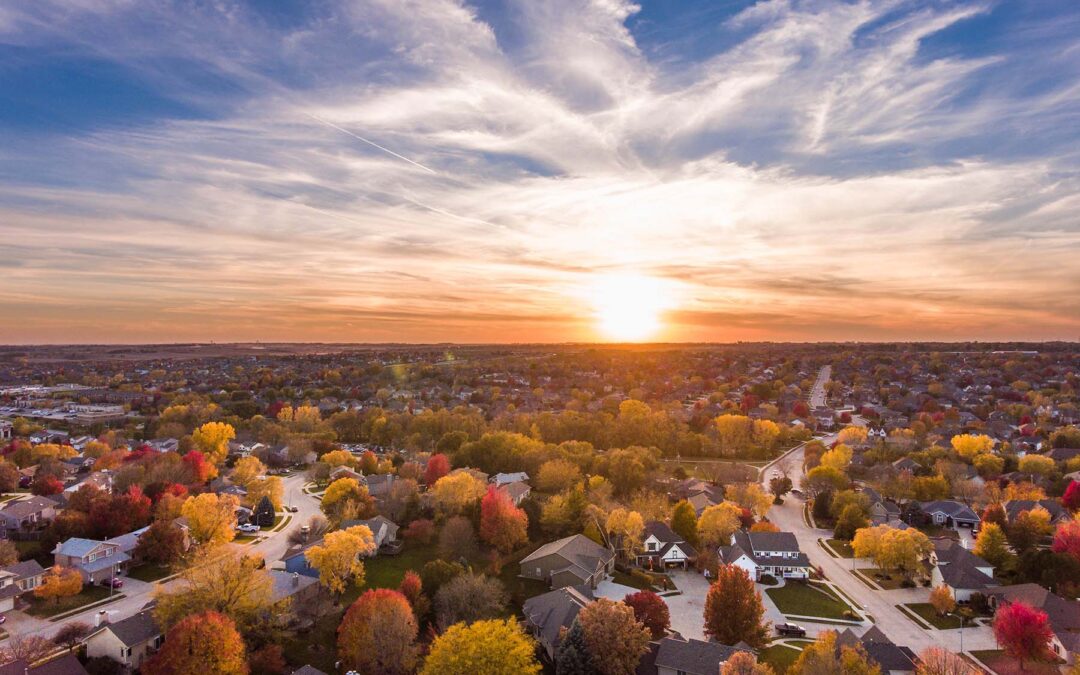As hope for a reviving economy staggers in about a year and a half after the first declaration of the COVID-19 pandemic, the U.S. real estate market appears to be following historical trends, albeit lacking in volume.
The third quarter of 2021 has met an expected increase in price and sales similar to trends pre-pandemic. However, due to the low market supply atypical of pre-pandemic levels, the median listing price for September of 2021 has increased by 8.6%. The median listing price appears to have peaked in July and has continued a downward trend until late September. If the current trend continues, the real estate market may continue to fall until the end of Q4.
Prices for real estate appear to be falling and may continue to do so, as indicated by the following major indicators.
Median Sold Price
The median sold prices have been following the same trend in Q3 as they did in Q2. At just over $385,000, median sold price plateaued starting July and continued to do so until September. There is an increase of about 8% in the year-over-year median price from Q3 2021 and Q3 2020.
With a 2% increase between Q3 and Q2, the average closing price appears to have stabilized, which is a welcomed respite for buyers. This is due to an increase of properties for sale. More people are now selling houses, knowing that the prices have increased, in hopes that they cash in on their equity.
Number of Houses Sold and Listed
With demand high and supply struggling to keep up, the average number of houses actively listed for sale has been around 650,000 throughout Q3. This is a 22% decrease from last year’s 830,000 homes in September alone. The average number of houses actively listed for sale has been at its lowest point in the last five years, and even lower than the first few days of the Covid-19 pandemic.
While the total number of homes sold did increase in Q2, if the current trend follows the historical trends, then the total number of houses available for sale in Q3 2021 might end up being this year’s peak.
This is turning out to be true as we look at the numbers. The total number of people selling homes has been decreasing slightly as of late. The housing shortage may have also been exacerbated by sellers hesitating to sell their houses after the 2021 Hurricane Ida. There are also fears of resurgent Covid-19 cases which further threatens to lower the median sales price.
Median Days on Market
Market liquidity has been increasing as of Q3. On average, the typical home spends about 43 days on the market in Q3 2021. This is an 11-day decrease from 2020 and a 23-day decrease from 2019.
The decrease in median days does not, however, mean that there is an increase in buyers in the real estate market. Instead, it is the relative scarcity of homes actively listed for sale which drives the median days much lower compared to a balanced market. There is always a need for houses. But with the lack of houses in the market, house sellers have less competition and are able to sell their houses faster than they would if there were more house sellers in their respective areas.
Houses situated within the 50 largest metropolitan areas in the U.S. spent about seven days less on the market than last year. The South has seen the largest decrease so far, at 12 days less than the previous year. Both the West and Midwest decreased by five days, while the Northeast had a decrease of two days. The typical American home spends about an average of 37 days on the market.
Analysis of Statistics
Similar to that of Q2, the real estate market in Q3 has been affected by disruptions in the chain of supply and demand. With less supply on the market every year, the average days in which houses will stay on the market will continue to decrease. This trend will continue unless either house prices increase in the near future to reduce the demand or more houses become available on the market, increasing supply.
With the decreasing number of new houses being sold on the market, however, the price may shift higher as fewer and fewer houses become listed for sale.
Conclusion
The third quarter of 2021 has shown a peak in the median sales price due to the lack of supply in the market. Demand has been increasing, lowering the average days houses remain for sale. The passing of Hurricane Ida in September and the public perception of the COVID-19 pandemic have also contributed to the supposed shortage of houses for sale.


Recent Comments